A Tour of Big Cypress Seminole Reservation - 2011
and
The Road to Clewiston - 2011
Updated:
06/16/11
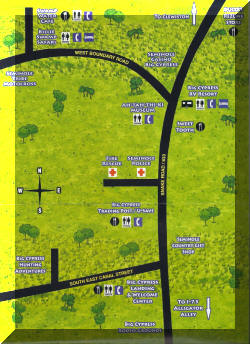
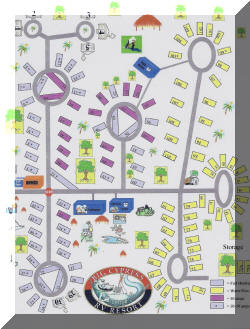 The reservation's main activity area (aka: town) about two miles from the campground is not very large.
It occupies only a small portion of the 77,000 acre reservation. Shopping opportunities are
limited, so most shopping is done in Clewiston about 45 miles away. We were
advised of the 'isolation' before we made our camping reservation. Most people
in camp planned a shopping trip to Clewiston and a trip to a fruit market near-by
once a
week.
The reservation's main activity area (aka: town) about two miles from the campground is not very large.
It occupies only a small portion of the 77,000 acre reservation. Shopping opportunities are
limited, so most shopping is done in Clewiston about 45 miles away. We were
advised of the 'isolation' before we made our camping reservation. Most people
in camp planned a shopping trip to Clewiston and a trip to a fruit market near-by
once a
week.

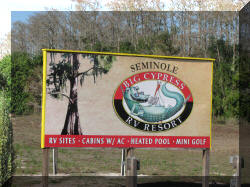
The side road to the campground
is just north of town.
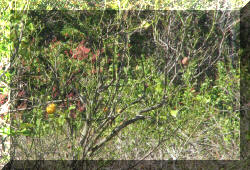
 The road to Billie Swamp Safari passed some shriveled up oranges on straggly
looking trees.
The road to Billie Swamp Safari passed some shriveled up oranges on straggly
looking trees.
 And,
newly planted fields with rows covered with plastic.
And,
newly planted fields with rows covered with plastic.
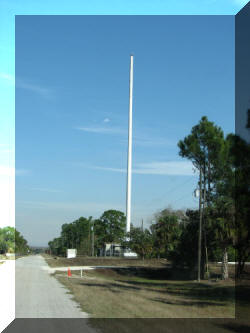 We
could not determine what purpose this tall white pole served.
We
could not determine what purpose this tall white pole served.
We were on the gravel part of the road as an unlicensed Jeep and ATV drove
by. It seemed that vehicles that did not leave the reservation did not require a
license plate. Sales tax was not charged for purchases on the reservation either.
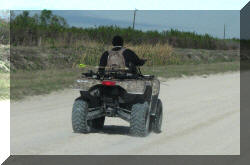
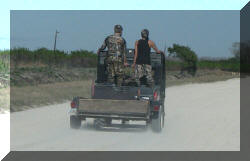
We took a quick drive to and through the parking lot of Billie Swamp Safari to familiarize ourselves with
the area. There will be a link added to our Web site later for our day-long visit. It was a great
day of fun - all at one price.
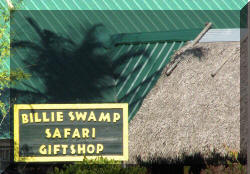



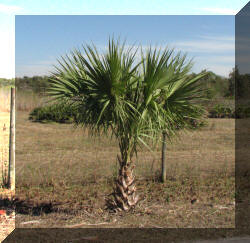
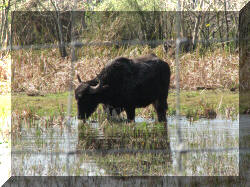
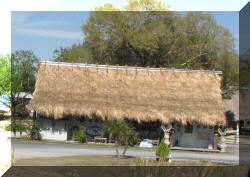 The Seminole Country Gift Shop sold very expensive native made crafts.
The Seminole Country Gift Shop sold very expensive native made crafts.
The airport runway ran parallel to the road into the campground.
The tribe owns fixed wing planes and a helicopter.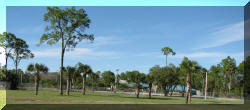
A drive through the residential neighborhood showed small cement block houses and
several Chickees. Most houses were maintained to minimum standards but decent. We
understand that each Seminole family can have one house on each of the five
Seminole reservations.
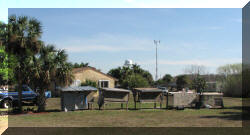
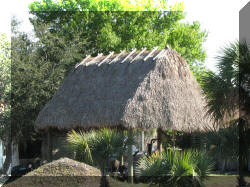
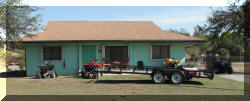

Some urban renewal was in progress.
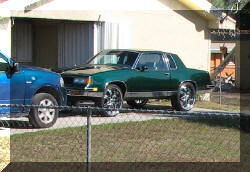 A
sharp looking green Chevy was parked in a driveway.
A
sharp looking green Chevy was parked in a driveway.
Several other houses not located in the 'neighborhood' area were of better quality. Again, not knowing for sure, we assumed these are full-time
homes. Some had significant landscaping.
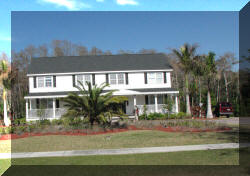

On the main road through the reservation, one house was very large with a
wrought iron fence surrounding it. We decided, without any evidence, that it was
the 'Chief's house'.
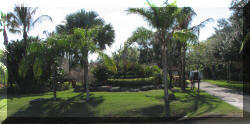
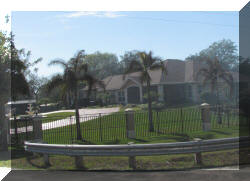
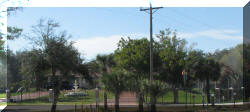
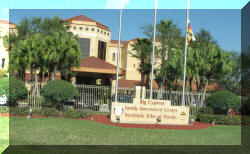 The
Seminoles decided many years ago that they could make more money owning and
operating a variety of business
endeavors than from only selling crops from their fields. The tribe
operates as a corporation and provides a family investment center for tribe
members. Unlike some tribes, the Seminoles employ non-tribe members.
Non-tribe members are careful not to get involved in any discussion about
'politics' as it relates to the tribe.
The
Seminoles decided many years ago that they could make more money owning and
operating a variety of business
endeavors than from only selling crops from their fields. The tribe
operates as a corporation and provides a family investment center for tribe
members. Unlike some tribes, the Seminoles employ non-tribe members.
Non-tribe members are careful not to get involved in any discussion about
'politics' as it relates to the tribe.
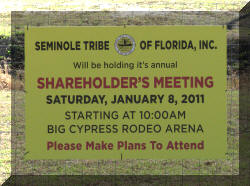
Their Public Safety building looked relatively new.
We were
told NOT to dial '911' for an emergency while on the reservation.
Our call
was to go to the public safety building where a medical staff and aircraft were
available to assist.
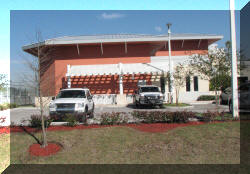
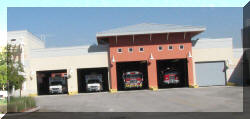
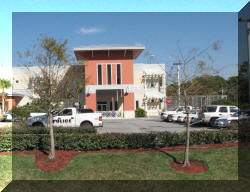
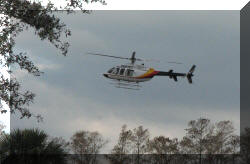
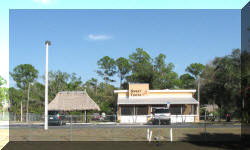 Wanting to go 'out stepping' one evening, we went to the "Sweet Tooth" for
carry-out pizza. While there we met a security guard for the Ah-Tah-Thi-Ki Museum who
provided information about the attractions on the reservation. She also warned
us that the 25MPH speed limit was strictly enforced.
Wanting to go 'out stepping' one evening, we went to the "Sweet Tooth" for
carry-out pizza. While there we met a security guard for the Ah-Tah-Thi-Ki Museum who
provided information about the attractions on the reservation. She also warned
us that the 25MPH speed limit was strictly enforced.
The two lane rural road leading to Clewiston gave us a good look at part of the waterway that
carries water to southern Florida using a series of canals. The canals flowed on
both sides of almost every road in South Florida and turns off into the fields, providing moisture to
the crops. Most, if not all, of the canals were habitat for alligators. In the
afternoons, the alligators would probably sun themselves on the bank. Unlike the
many we saw on road between I-75 and Big Cypress, we only saw one alligator on our
drive to Clewiston.
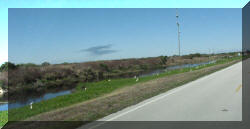
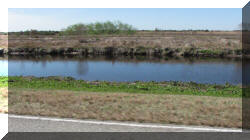
Most of the water serving South Florida originates for the
Lake Okeechobee - the "liquid heart of Florida".
The lake
covers 730 square miles.
.
The South
Florida Water Management District: The regional water management
system established in 1972, with more than 1,600 miles of canals and 1,000 miles
of levees/berms, 60 pump stations, and more than 500 structures and 700
culverts, helps to protect regional water supplies and provide flood control.
(Per their Web site)

About the South Florida Water Management District (per their Web site)
The South Florida Water Management District is a regional, governmental
agency that oversees the water resources in the southern half of the state – 16
counties from Orlando to the Keys. It is the oldest and largest of the state’s
five water management districts. The agency mission is to manage and protect
water resources of the region by balancing and improving water quality, flood
control, natural systems and water supply. A key initiative is cleanup and
restoration of the Everglades.
Maybe due to moisture, many of the utility poles were steel instead of wood.
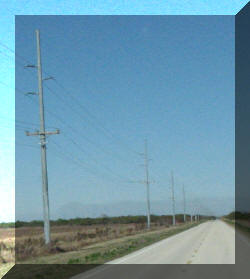
As common as a trailered boat with an outboard is in Michigan, airboats are trailered
to fishing and hunting sites near the Everglades. This one was in the Wal-Mart parking lot in
Clewiston.
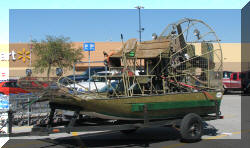
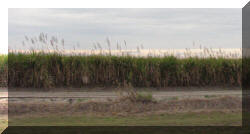 Clewiston is known as the "Sweetest City" due to the sugar cane fields
surrounding the city.
Clewiston is known as the "Sweetest City" due to the sugar cane fields
surrounding the city.
On the two lane road to Clewiston, we saw evidence of the burning off of farm fields.
The road passed through an areas that are 99.99% farm fields and orange groves.
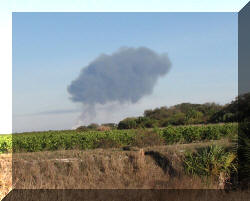
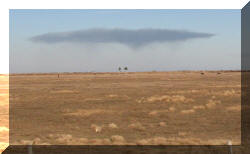
While we never saw the actual harvesting of oranges, we saw many trucks loaded with
oranges located at the edge of orange groves and on the road to processing
plants.

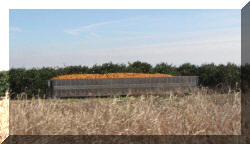
Interestingly, the oranges we purchased at Wal-Mart in Florida were . . . California
Oranges.
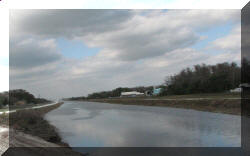 This
canal carries a lot of water to the reservation. It was located on the south
side of town. We drove by it several times as we made day trips
requiring us to drive 'off the reservation' towards I-75 about 18 miles to the south.
This
canal carries a lot of water to the reservation. It was located on the south
side of town. We drove by it several times as we made day trips
requiring us to drive 'off the reservation' towards I-75 about 18 miles to the south.
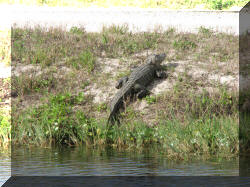
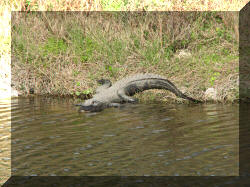 The
road south
was an interesting ride. We were always vigilant for wildlife - including a lot
of alligators. There was also a collection of Anhinga, Storks and Heron.
The
road south
was an interesting ride. We were always vigilant for wildlife - including a lot
of alligators. There was also a collection of Anhinga, Storks and Heron.
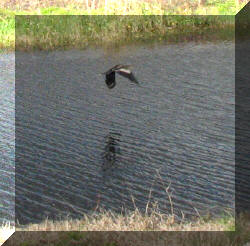
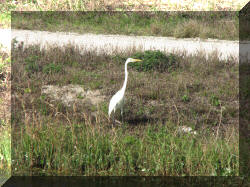
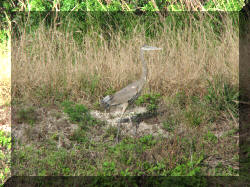
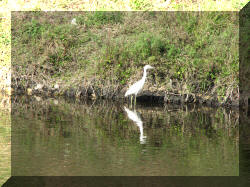
We wondered if these birds were sometimes lunch for the alligators.
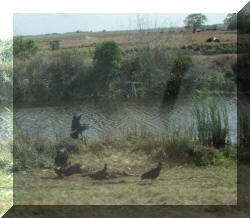
Even roadkill was not wasted.
These black birds were eating
their our relative.
Many head of cattle grazed in the pastures.
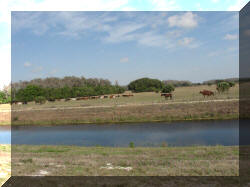
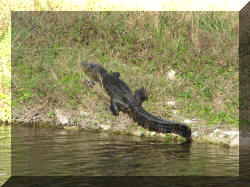
And, another alligator sunning itself.
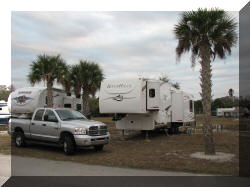 You now have a flavor of
'where' we spent our first month (actually, excluding the cruise, three
weeks) in Florida.
You now have a flavor of
'where' we spent our first month (actually, excluding the cruise, three
weeks) in Florida.
The 'where', of course, is not what we lived in but where we parked
our HitchHiker.
Top of Page
MAIN PAGE - Florida
Winter Tour - 2011

 The reservation's main activity area (aka: town) about two miles from the campground is not very large.
It occupies only a small portion of the 77,000 acre reservation. Shopping opportunities are
limited, so most shopping is done in Clewiston about 45 miles away. We were
advised of the 'isolation' before we made our camping reservation. Most people
in camp planned a shopping trip to Clewiston and a trip to a fruit market near-by
once a
week.
The reservation's main activity area (aka: town) about two miles from the campground is not very large.
It occupies only a small portion of the 77,000 acre reservation. Shopping opportunities are
limited, so most shopping is done in Clewiston about 45 miles away. We were
advised of the 'isolation' before we made our camping reservation. Most people
in camp planned a shopping trip to Clewiston and a trip to a fruit market near-by
once a
week. 







































